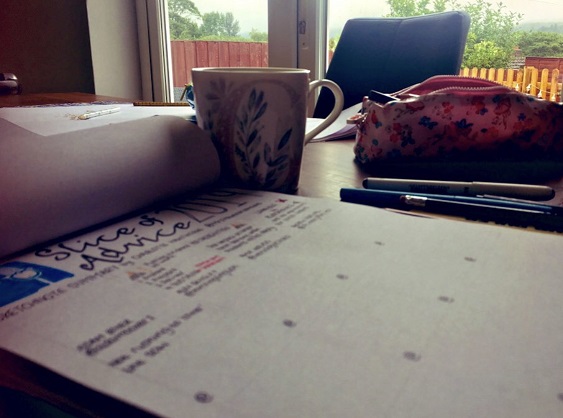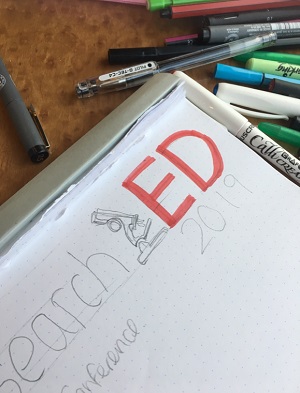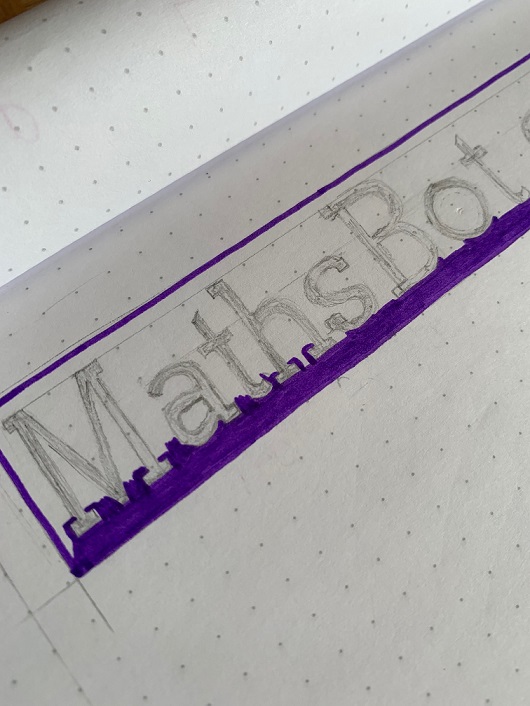How I sketchnote
I have been asked many times about how I go about creating my sketchnotes and the equipment I use so it will be handy in the future to point people to this blog post. I picked up the basic principles from Oliver Caviglioli’s sketchnotes and the information in his book ‘Dual Coding with Teachers’.
The first step in creating a sketchnote, for me, is having a rough idea that the thing I want to sketchnote actually suits one. There are some things that just won’t suit a sketchnote. Some things offer an obvious layout, like Craig Barton’s podcast ‘Slice of Advice 2019’. The episode featured a set number of speakers all giving a small snippet of advice so all I had to do was work out how much space I could afford to give each person, which you can just about see in the picture below.

One absolute must, in my opinion, is square dotty paper, especially if you want to share your sketchnote with others. If it’s just for your own notes then the layout is less important but having an organised layout with information in chunks helps to make it easy to read. See here for some of the examples that inspired me. After dotty paper, good pens are the next most important piece of equipment for a good sketchnote. I like to keep the majority of the text black, I use either 0.5 or 0.3 fine-liner (Staedtler). I also have some super fine 0.1 pens (Uni Pin, I think) which are useful if you want to fit more information in and for sketching people, though this is not my forte so I tend not to but Oliver Caviglioli does this wonderfully well. I make no secret of the fact I'd love, one day, to have my very own Olicav portrait! Anyway, back to pens, I've recently invested in some colourful pigment liners, in truth there's not much difference and there's a much greater variety of colours available in say papermate flair but one slight advantage, maybe, is that pigment liners are 'water proof', not that I would purposely try to get my sketchnotes wet but maybe its a slight advantage.


Once I've decided to that something can be turned into a sketchnote I start work on the title. I like this to be the most detailed part in terms of logos or fancy writing for the name of the person or title of the CPD. The titles tend to take the longest to do so if I want to sketchnote live but also have a fancy title then I try to prepare these in advance. In the picture below you can see my prep of the ResearchEd sketchnote, which I did on the train to the conference, and the prep behind the MathsBot title.


You may also be able to see in the MathsBot one, the guidleines I draw to help me keep the height of my capitals and small letters consistent, a bit like handwriting guidelines primary schools would use. This isn't important for the main writing but for a title it's nice to have it look as neat as possible I feel.
Many people have asked me if I do everything in pencil first and the answer to this isn't straightforward, sometimes I sketchnote 'live' during a conference session and in this case there wouldn't be time to go over everything if I want it to be pretty much the finished article at the end. Kathryn's (@arithmatiks) 'Beginners guide to your first TLR' is one such example. The fact that her talk was so organised helped me to keep it so neat. Sometimes, especially if there might be a lot of diagrams to include then I might start writing and drawing in pencil and go over thing in my own time. The other option is to take all rough notes and make a sketchnote from them later. As with anything, the more I practise the easier it is to sketchnote everything in real-time.
The recent switch to online CPD makes 'live sketchnoting' rather difficult but it does make creating good sketchnotes easier as I can pause and replay content as much as I need to. It means I can often get more detail on a page. One final rule, which I try not to break (but I have had to on the odd occasion) is to keep to one A4 page. A sketchnote is, for me, supposed to be a summary of the ides and not the entire presentation. Sketchnotes are a useful way to help others structure their notes, recall aspects of a presentation or share CPD with colleagues, for those who want to create their own I hope that this post provides enough information to make a good start. And for those that don't, making all of my sketchnotes available on this site, I hope, will make it easy for people to use the ones I've already created to share CPD more widely.